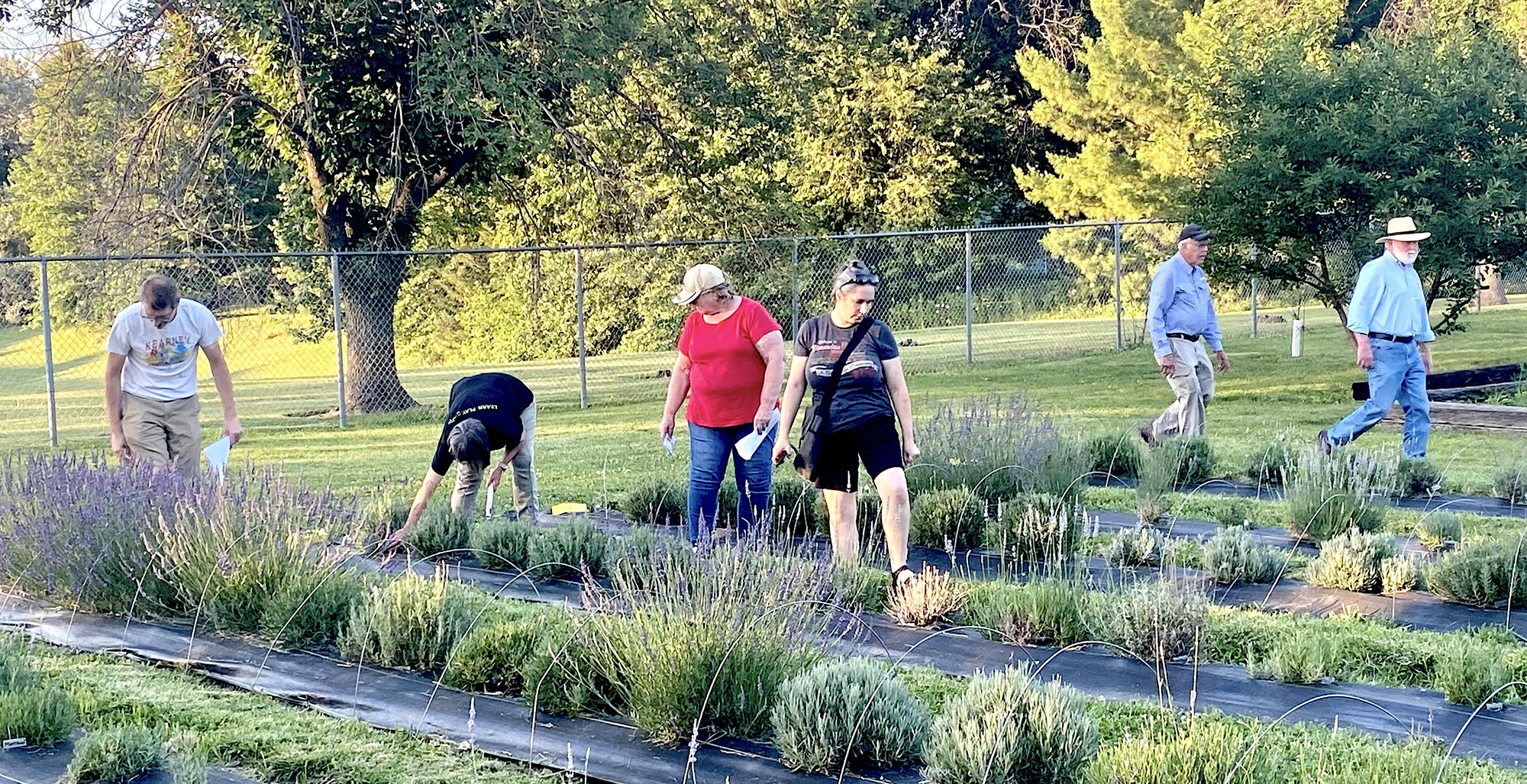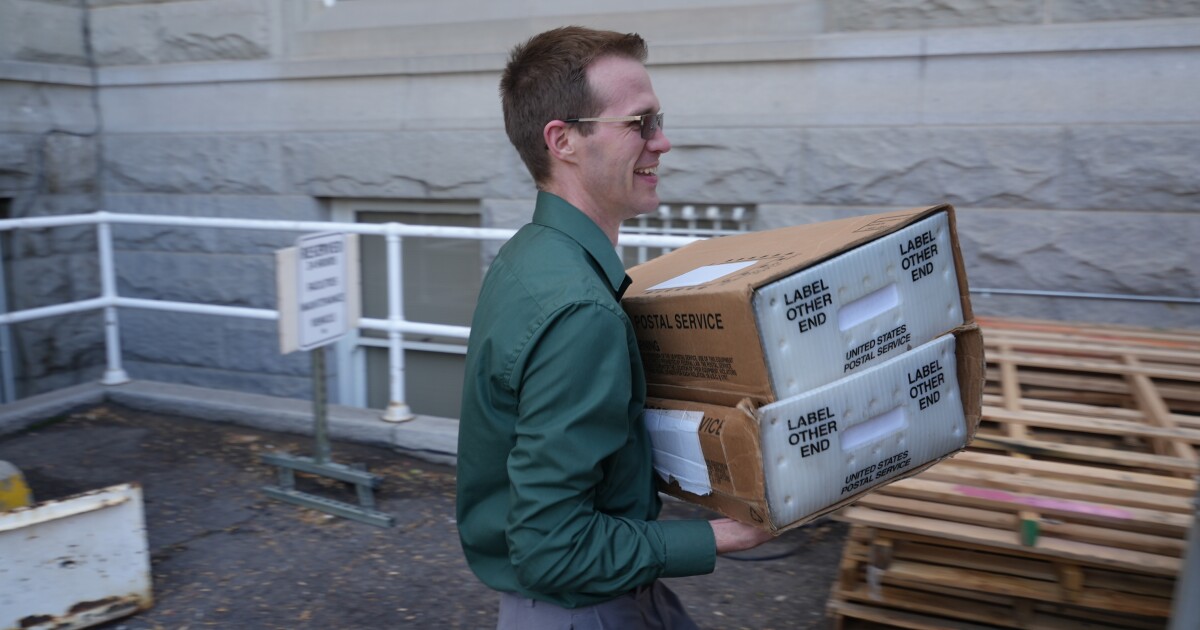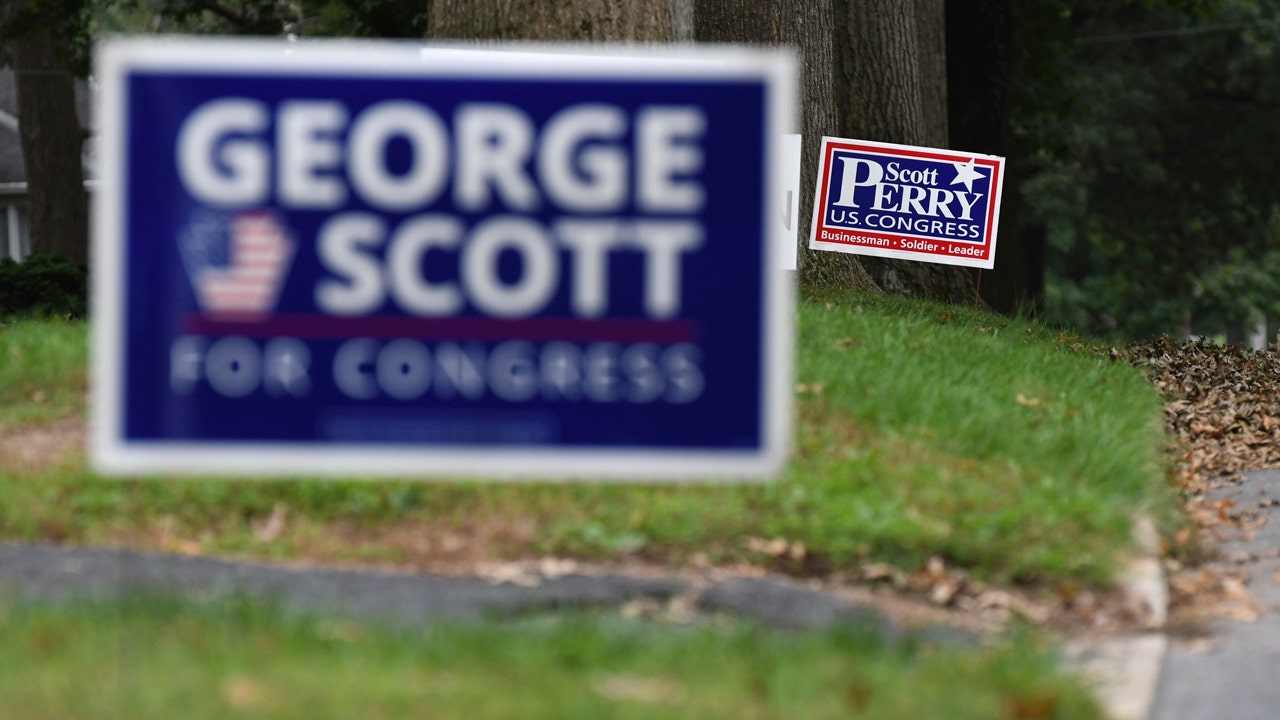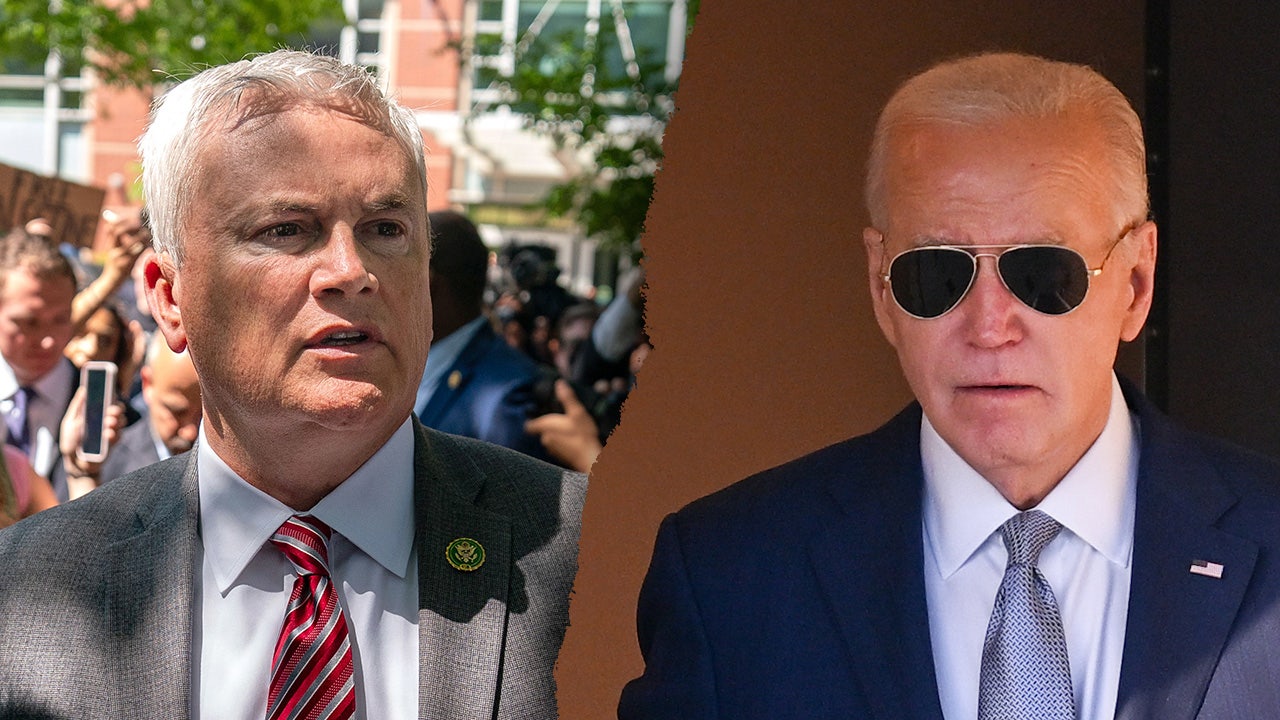Missouri
MU Extension research on lavender finds options for Missouri growers – Muddy River News

SPRINGFIELD, Mo. — After three years of research, University of Missouri Extension horticulture specialists are learning how to successfully grow lavender in Missouri.
The popularity of lavender’s fresh scent has endured since ancient times. Cleopatra reportedly used it to seduce Julius Caesar and Mark Antony. By the 16th century, people were using it to ward off disease, preserve the dead and ease indigestion.
In a press release, Kelly McGowan, who lead the study, said, “Lavender is more popular than ever.”
Today, lavender’s scent is promoted in many products – detergents, body soaps, balms, perfumes, toilet tissue and much more. It is also used in cooking and medicines.
Because of Missouri’s diverse climate and topography, MU researchers planted test plots in four locations in the state. McGowan used the Springfield Botanical Garden for plots; horticulturists Katie Kammler and Donna Aufdenberg planted at the MU Extension Center in Ste. Genevieve; Patrick Byers planted at MU’s Southwest Research Center in Mount Vernon; and Jennifer Schutter grew 22 cultivars and 120 plants over three years in northern Missouri at Kirksville.
They found that six main cultivars perform well in Missouri: Dutch Mill, Grosso French, Munstead English, Hidcote English, Phenomenal and Provence. Spanish varieties of lavender do not survive Missouri winters, says McGowan. High humidity also can adversely affect some varieties. As with all gardening, perform, have soil tested before planting and follow recommendations.
Regardless of location, this member of the mint family suffers when it receives too much water. MU researchers suggest growing it in raised rows and beds, containers or high tunnels with good drainage and protection from excessive rainfall. A watering schedule that keeps plants on the dry side also is preferred.
Plants need to be covered in colder climates such as in northern Missouri, says Schutter. During the study, she covered some rows and left others uncovered. Uncovered plants died or suffered dieback and needed severe pruning in spring. Protected plants survived, with the exception of one cultivar, Blue Spear, which is not recommended in north Missouri.
Plants grow about 1-2 feet tall. Dense hairs coat the pale green leaves to give them their trademark silvery luster. The light purple lavender flowers are tiny and arranged in spikes. Every part of the plant contains the oil that produces a sweet fragrance.
“Fresh lavender plants will keep a garden fragrant as well as attract a variety of pollinators like bees, butterflies, praying mantis and others,” says Schutter. “In urban settings where the population of natural pollinators, including bees and butterflies, is on a decline, lavender plants offer an invaluable attraction to these species.”
In addition to drawing pollinators, lavender can keep away unwanted insects such as fleas, flies and mosquitoes.
Kammler describes this perennial as “finicky.” Even within the same area, cultivars may respond differently. MU horticulturists say growers should plan for some failure – as much as 20%-25% plant loss each season.
Plants are easy to propagate, although some cultivars are trademark-protected and propagation is prohibited. For questions, contact McGowan at mcgowank@missouri.edu.
McGowan says there is a strong demand for lavender for home gardeners and those wanting to sell value-added products such as soaps, oils and balms. “You can very likely sell what you grow,” she says.
“Lavender provides many opportunities for those with small acreages,” says Byers. In the next phase of MU Extension’s research, horticulturists plan to explore ways that growers can raise lavender to boost Missouri’s agricultural economy through agritourism and value-added products, he says.
The researchers also plan to release an MU Extension guide on lavender growing in the spring.
You can contact McGowan at mcgowank@missouri.edu, Kammler at kammlerk@missouri.edu, Byers at Byersp@missouri.edu, Schutter at schutterjl@missouri.edu or Aufdenberg at aufdenbergd@missouri.edu.
The Missouri Department of Agriculture provided funds for the research through a USDA Specialty Crop Block Grant.

Missouri
Missouri State leaving FCS for FBS

SPRINGFIELD, MO (Dakota News Now) – Another round of college re-alignment is hitting the FCS and Missouri Valley Football Conference.
Missouri State announced today that they are leaving the Missouri Valley and Missouri Valley Football Conference to join FBS Conference USA effective in the 2025-26 season.
They are the second charter member of the Valley to leave the conference in the last two years after Western Illinois bolted following the end of last season for the Ohio Valley. They were effectively replaced by Murray State who joined last season.
As it stands the league will be down to ten teams after 2024 when Missouri State heads up to the FBS. The Bears will not be eligible for the FCS Playoffs this season.
Copyright 2024 Dakota News Now. All rights reserved.
Missouri
USPS representative shows embattled Missouri City facility in tour | Houston Public Media

Patricia Ortiz/Houston Public Media
The United States Postal Service provided a media tour Thursday of its new processing center in Missouri City after residents in the Houston area experienced mail delays earlier this year.
Medications, wedding dresses and other packages were often weeks late. And Houston-area representatives of Congress were mediating between residents and the postal service for most of the delays.
John DiPeri, the vice president for regional processing operations in USPS’ western processing region, led reporters throughout the South Houston Local Processing Center (LPC) in Missouri City. DiPeri said he wanted to be in town when the tour happened.
“There’s been major construction going on, a lot of equipment going in, a lot of cement work going in, a lot of planning,” he said. “So we wanted to bring it in when it was safe enough to bring a crew in, it was organized to where we could bring in and show you a good tour.”
A press release from the postal service states the South Houston facility officially opened for operations in late March. An audit released last month found the same facility was opened in November with temporary staff for a “peak season annex.” The same audit found more than 380,000 delayed parcels during an inspection in January.
DiPeri said Houston-area residents saw mail delays earlier this year because of new technology and the construction happening at the facility.
“We learned that we need to be precise in our planning, have better communications, have well-trained people, and have better communications with our suppliers, and understand the supply chain better,” DiPeri said.
The Delivering for America plan is a 10-year initiative the postal service has been working on to increase efficiency. Part of the plan included replacing some of the machinery at the South Houston facility with newer mail sorters. Local leaders found out in a meeting with the National Association with Postal Supervisors that there were also staffing shortages and transportation issues.
“I apologize for that poor service that we had in the beginning of the year,” DiPeri said. “Our jobs are to collect, process, and deliver the mail and we take that really seriously. So we have brought the right people, the right leaders, right leadership, right employees … to assure as we’re going through this modernization we’ll maintain a service and efficiency.”
DiPeri said since January, over 100 employees have been added to work at the processing center. Construction and modernization is expected to continue until mid-August, when 500 people will be working at the building.
Missouri
Missouri State leaving MVFC and moving to FBS, Conference USA

FARGO — A Missouri Valley Football Conference program is set to leave the conference and join a Football Bowl Subdivision league.
Missouri State announced Friday, May 10, the it has accepted an invitation to join Conference USA as a full-league member starting July 1, 2025.
Missouri State is currently a member of the Missouri Valley Football Conference and the Missouri Valley Conference, its primary league. Conference USA is an FBS league for football. North Dakota State and University of North Dakota football teams play in the Missouri Valley Football Conference.
“We are so excited for the opportunities that CUSA membership will bring to our university, our student-athletes, our coaches and our fans,” said Missouri State Director of Athletics Kyle Moats in a release. “This move represents a transition to a national brand and a platform that will help raise the profile of Missouri State University and the city of Springfield. The steps we have taken over the past 15 years to invest in a successful broad-based athletics program have prepared us for this long-awaited moment.”
The MVFC, an FCS conference, will have 11 members for the 2024 season and 10 members in 2025 after Missouri State exits the league. Western Illinois is slated to move into the Ohio Valley Conference starting in 2024.
“This move will absolutely open doors for us,” Moats explained. “For our student-athletes, they will have less bus travel and more flights which will get them back to campus in a safer and more-timely manner. They will also have more financial resources at their disposal for cost of attendance, Alston funds, and a more strategic presence in the name, image and likeness (NIL) space.”
North Dakota State joined the Missouri Valley Football Conference in 2008. Missouri State had been a league member since 1985.
Check back for more updates on this story.
Peterson covers college athletics for The Forum, including Concordia College and Minnesota State Moorhead. He also covers the Fargo-Moorhead RedHawks independent baseball team and helps out with North Dakota State football coverage. Peterson has been working at the newspaper since 1996.
-

 Politics1 week ago
Politics1 week agoThe White House has a new curator. Donna Hayashi Smith is the first Asian American to hold the post
-

 News1 week ago
News1 week agoPolice enter UCLA anti-war encampment; Arizona repeals Civil War-era abortion ban
-

 Politics1 week ago
Politics1 week agoAdams, NYPD cite 'global' effort to 'radicalize young people' after 300 arrested at Columbia, CUNY
-

 World1 week ago
World1 week agoTurkish police arrest hundreds at Istanbul May Day protests
-

 News1 week ago
News1 week agoVideo: Police Arrest Columbia Protesters Occupying Hamilton Hall
-

 News1 week ago
News1 week agoSome Republicans expected to join Arizona Democrats to pass repeal of 1864 abortion ban
-
)
) Movie Reviews1 week ago
Movie Reviews1 week agoThe Idea of You Movie Review: Anne Hathaway’s honest performance makes the film stand out in a not so formulaic rom-com
-

 Politics1 week ago
Politics1 week agoNewsom, state officials silent on anti-Israel protests at UCLA
:quality(70)/cloudfront-us-east-1.images.arcpublishing.com/sfr/GW6Z5EHQIZETZHFRLLV4I6DZSY.jpg)













